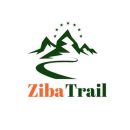Empower Your Online Presence with Our DIY SEO Guide
Unlock the secrets of effective DIY SEO with our comprehensive guide. Learn strategies, tips, and techniques to boost your website’s visibility and drive organic traffic. Take control of your digital success today!
Master the Art of DIY SEO with Our 30-Step Guide
Unlock the power of search engine optimization with our comprehensive 30-step guide. Learn how to enhance your website’s visibility, drive organic traffic, and boost your online presence. Whether you’re a beginner or looking to refine your skills, our guide will walk you through the essential steps to optimize your website and improve your search engine rankings. Stay tuned for more detailed insights and tips as we continue to refine and expand this invaluable resource for mastering DIY SEO.
Keyword Research: Identify relevant keywords by researching industry trends and target audience preferences to optimize content and attract organic traffic effectively.
Competitor Analysis: Evaluate competitors’ websites to understand their strategies, discover gaps, and leverage insights for your own SEO improvements.
Create Quality Content: Produce valuable and informative content aligned with targeted keywords, offering value to users and enhancing search visibility.
Optimize Title Tags: Carefully compose title tags within the recommended character limit (60-70) to accurately convey page content and engage search users.
Meta Descriptions: Craft compelling meta descriptions (150-160 characters) that summarize page content, encouraging clicks and enhancing search result visibility.
Header Tags: Utilize H1, H2, and H3 header tags to structure content logically, enhancing both user experience and search engine understandability.
Optimize Images: Add descriptive alt text to images, ensuring accessibility for users with disabilities and improving image-based search visibility.
URL Structure: Create concise and descriptive URLs that reflect the content of the page, enhancing both user experience and search engine understanding.
Internal Linking: Strategically place internal links to guide users to related content, enhancing navigation and distributing authority throughout the site.
External Linking: Integrate links to authoritative external sources to provide additional value to users and establish credibility within your content.
Mobile-Friendly Design: Prioritize a responsive design to ensure your website functions seamlessly across various devices, enhancing user experience and search rankings.
Page Speed: Improve load times by optimizing images, minimizing code, and enabling browser caching, providing a smooth browsing experience for users and search engines.
Schema Markup: Enhance search results with structured data, improving visibility and providing valuable information to users directly in search listings.
XML Sitemap: Create and submit an XML sitemap to search engines, aiding in the efficient discovery and indexing of your website’s content.
Robots.txt: Configure the robots.txt file to guide search engine crawlers, controlling which pages are indexed and ensuring efficient site exploration.
HTTPS Security: Secure your website with an SSL certificate, instilling trust in users and improving search rankings with Google’s security preference.
User Experience: Prioritize intuitive navigation and a clear layout to enhance user satisfaction and engagement, factors that positively influence search rankings.
Social Media Integration: Integrate share buttons and connect social profiles, enabling easy content sharing and increasing your online presence.
Canonical Tags: Set canonical tags to address duplicate content issues, guiding search engines to the preferred version of a page.
Analytics Setup: Install Google Analytics to track user behavior and gather insights for continuous improvements.
Google Search Console: Verify your site to access valuable data and monitor search performance, ensuring your site is effectively indexed.
404 Error Pages: Customize error pages and provide useful links to guide users when they encounter broken or missing content.
Keyword Optimization: Integrate relevant keywords naturally within your content, improving search visibility for targeted queries.
Content Freshness: Regularly update and refresh your content to maintain relevance and encourage return visits from both users and search engines.
User Reviews: Encourage user reviews and testimonials to build credibility and trust, influencing potential customers and search rankings.
Local SEO: Optimize for local search visibility by utilizing Google My Business, increasing your presence within local search results.
Voice Search Optimization: Adapt your content to cater to voice search queries, capturing the growing number of voice-driven searches.
Mobile-First Indexing: Prioritize mobile user experience to align with Google’s mobile-first indexing approach, enhancing search visibility.
Optimize for Featured Snippets: Format content to appear as featured snippets, capturing prime search result real estate and providing quick answers to users.
Backlink Building: Focus on acquiring high-quality backlinks from reputable sources to establish authority and credibility within your niche.

